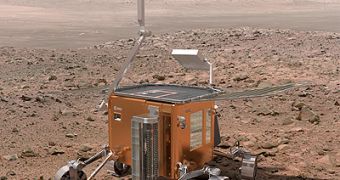A new infusion of capital in the European Space Agency's financial reserves has enabled them to secure some of their plans related to a number of projects, among which are the Mars rover of their ExoMars mission. The European ministries decided a week ago to increase ESA's budget for the following three to five years by one more billion Euros so that the allocated sum now reaches a total of €10 billion.
ExoMars represents the first major initiative in the European agency's Aurora Exploration Programme. The overall goal of the mission involves achieving major technological and scientific objectives that will enhance Europe's involvement in space exploration. More specifically, it will imply the deployment of an impressive payload on the red planet, including a mobile science platform (the rover), a drilling instrument that will collect underground samples which, in turn, will be processed and distributed by an additional specific device, while ensuring and maintaining the cleanliness standards required by the operation.
The rover placed on the surface of the planet will make use of its large set of exobiological and geological instruments, called the Pasteur payload, as it will hover the planetary surface searching for signs of life, be it present or past. The Humboldt payload will also be deployed along with the rover, for environment studies and geophysical measurements that will provide a better insight on Mars' habitability and evolution.
The recent funding initiative is also aimed to provide enhanced support for the European high technology economy in relation to the global crisis. According to ESA's director general, Jean-Jacques Dordain, as quoted by New Scientist, "In a period of economic crisis, this is the time to invest in the future". Among the other objectives positively affected by the increased budget are an upgrade to the Ariane launcher, better monitoring satellites and adapting ESA's supply craft so that it can also transport a human crew to the International Space Station.

 14 DAY TRIAL //
14 DAY TRIAL //